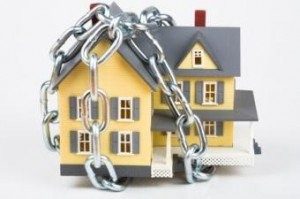 This week, the Mortgage Bankers Association (MBA) reports that the number of U.S. homeowners in forbearance programs dropped to 2.1 million, a share of 4.22% in servicers' portfolio volume, down 14 basis points from last week’s share of 4.36%.
This week, the Mortgage Bankers Association (MBA) reports that the number of U.S. homeowners in forbearance programs dropped to 2.1 million, a share of 4.22% in servicers' portfolio volume, down 14 basis points from last week’s share of 4.36%.
"More homeowners exited forbearance in the first full week of May, leading to a 14-basis-point decrease in the forbearance share—the 11th straight week of declines. The rate of new requests dropped to four basis points, which is the lowest level since last March," said Mike Fratantoni, MBA's Senior Vice President and Chief Economist. "Of those in forbearance extensions, more than half have been in forbearance for more than 12 months."
In terms of investor type, the share of Fannie Mae and Freddie Mac loans in forbearance decreased eight basis points, from 2.32% to 2.24%. Ginnie Mae loans in forbearance decreased 21 basis points, from 5.82% to 5.61%, while the forbearance share for portfolio loans and private-label securities (PLS) decreased by 29 basis points, from 8.55% to 8.26%. The percentage of loans in forbearance for independent mortgage bank (IMB) servicers decreased 16 basis points to 4.42%, and the percentage of loans in forbearance for depository servicers declined 12 basis points to 4.35%.
By stage, 11.9% of total loans in forbearance are in the initial forbearance plan stage, while 83.0% are in a forbearance extension. The remaining 5.1% are forbearance re-entries.
The recent ATTOM Data Solutions and RealtyTrac's U.S. Foreclosure Market Report found that a total of 11,810 U.S. properties had foreclosure filings—default notices, scheduled auctions, or bank repossessions—which was down 1% month-over-month and down 17% year-over-year. The study also found that nationwide one in every 11,636 housing units had a foreclosure filing in April.
Of the cumulative forbearance exits for the period from June 1, 2020, through May 9, 2021:
- 27.1% resulted in a loan deferral/partial claim.
- 24.9% represented borrowers who continued to make their monthly payments during their forbearance period.
- 15% represented borrowers who did not make all of their monthly payments and exited forbearance without a loss mitigation plan in place yet.
- 14.2% resulted in reinstatements, in which past-due amounts are paid back when exiting forbearance.
- 9.8% resulted in a loan modification or trial loan modification.
- 7.4% resulted in loans paid off through either a refinance or by selling the home.
- The remaining 1.6% resulted in repayment plans, short sales, deed-in-lieus or other reasons.
"The opening of the economy, as the successful vaccination effort continues, should lead to further reductions in the forbearance share,” said Fratantoni. “However, many homeowners continue to struggle. Borrowers who are reaching the end of their forbearance term should reach out to their servicer to review their options."
Weekly servicer call center volume increased from the previous week from 7.8% to 8.0%, with the average call length time having decreased slightly from 8.1 minutes to 7.9 minutes.

 DSNews The homepage of the servicing industry
DSNews The homepage of the servicing industry









